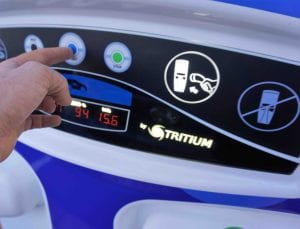Jaguar unveiled its I-PACE – its first battery electric vehicle – in Sydney for the first time on Wednesday, and says it has never experienced such positive feedback ahead of a product launch.
The I-PACE, starting off at a cool $A119,000 before on-road costs, was shown to the public at an event in Galleries Victoria, in front of an invited group of dealers, media, customers and surprised onlookers.
The display, in the same building that houses Citi, is clearly designed to attract the interest of the passing investment banker and lawyer, should they ever look up from their smart phones as they walk past over the next week.
But the impending release of the I-PACE in coming months is significant, being as it is the one big addition to the very shallow Australian EV market in 2018 and the first major venture into EVs by one of the world’s most admired automotive brands.
Jaguar expects first deliveries to be made “in the fourth quarter”, and reports “interest” from more than 2,000 potential customers, and actual sales (well, deposits at least) from 28 customers to date in Australia.
 Jaguar is delighted. “It’s the most interest we have ever had pre-launch of any Jaguar,” says marketing manager Kevin Nicholls.
Jaguar is delighted. “It’s the most interest we have ever had pre-launch of any Jaguar,” says marketing manager Kevin Nicholls.
The starting price of $A119,000 extends out to $A169,000, but this pricing has nothing to do with battery size, and is more about the other add-ons such as interior fittings, the sunroof and alloy wheels.
A 90kWh battery, and a range of 470km, comes standard.
The new head of Jaguar Australia, Mark Cameron, pictured above, spoke of the “design freedom” afforded by the lack of a big engine.
This has enabled designers to play around, extending the interior space, pushing the wheels further to the extremities – although anyone expecting to fit their golf clubs into the space left under the bonnet will be disappointed. You might just fit a bag of oranges.
The look and feel will be highly subjective – the real test will come in the driving, and reports from overseas have been excellent: great torque, acceleration (0-100kmh is 4.8 seconds) and the surprising satisfaction of regenerative braking, which effectively means the car slows if you take your foot off your accelerator, meaning a lot less use of the brake pedal.
“This is a seismic shift for the Jaguar range,” Cameron says.
Given the huge response so far to a car double the price of its cheapest petrol offering, and its recent survey about buying intention, Jaguar appear to have seen the future, and decided to embrace it.









